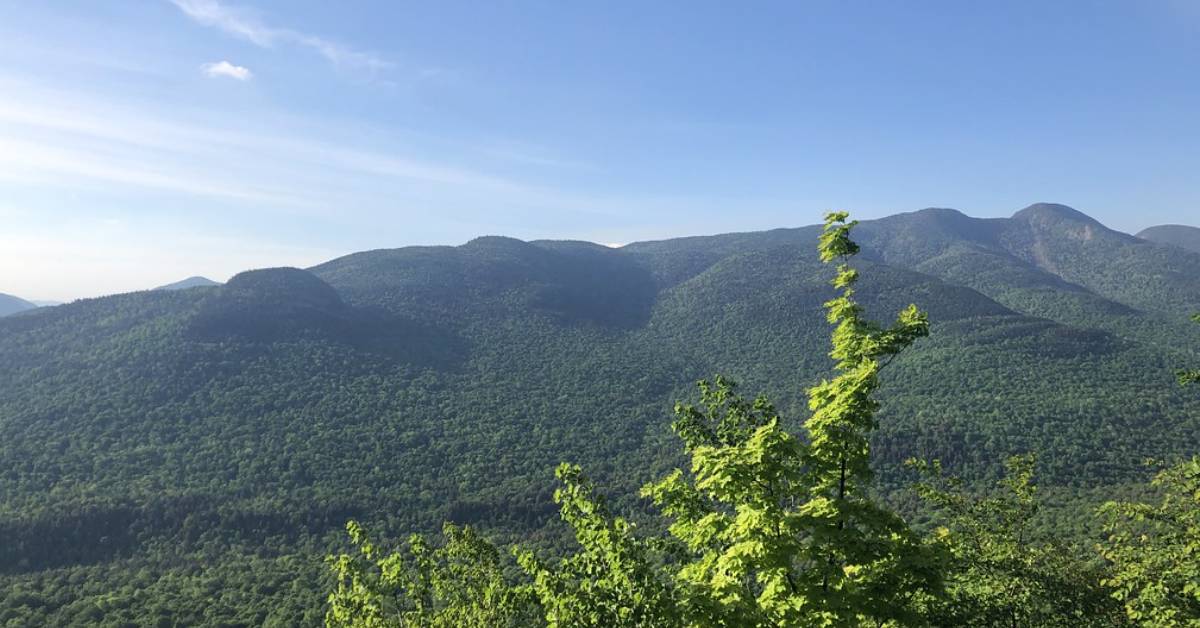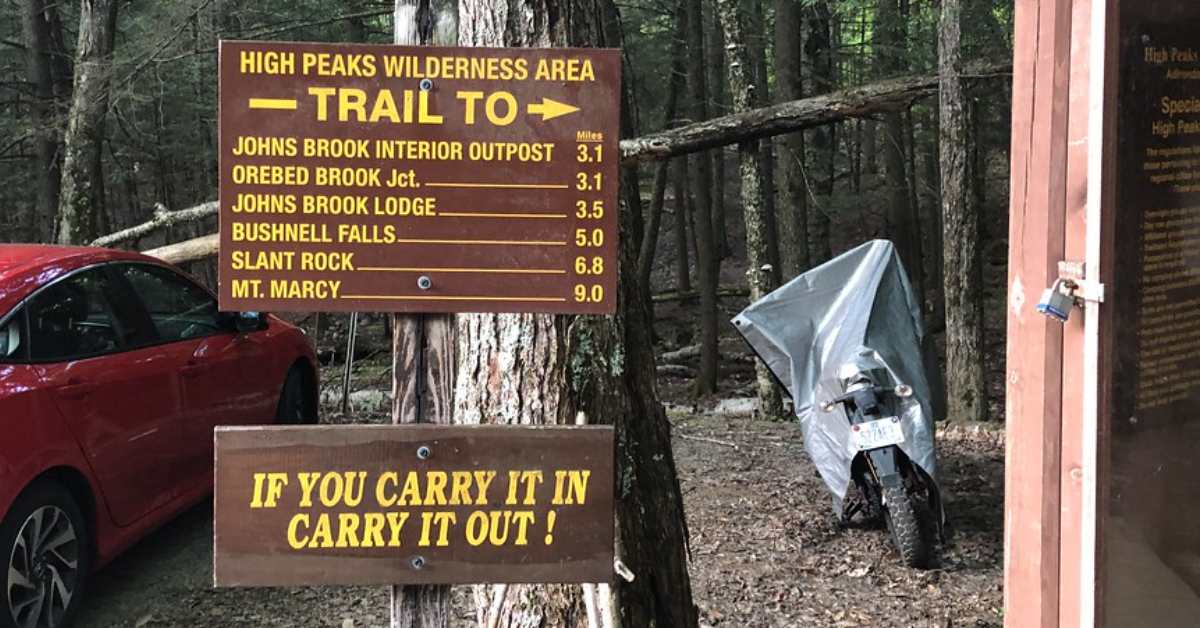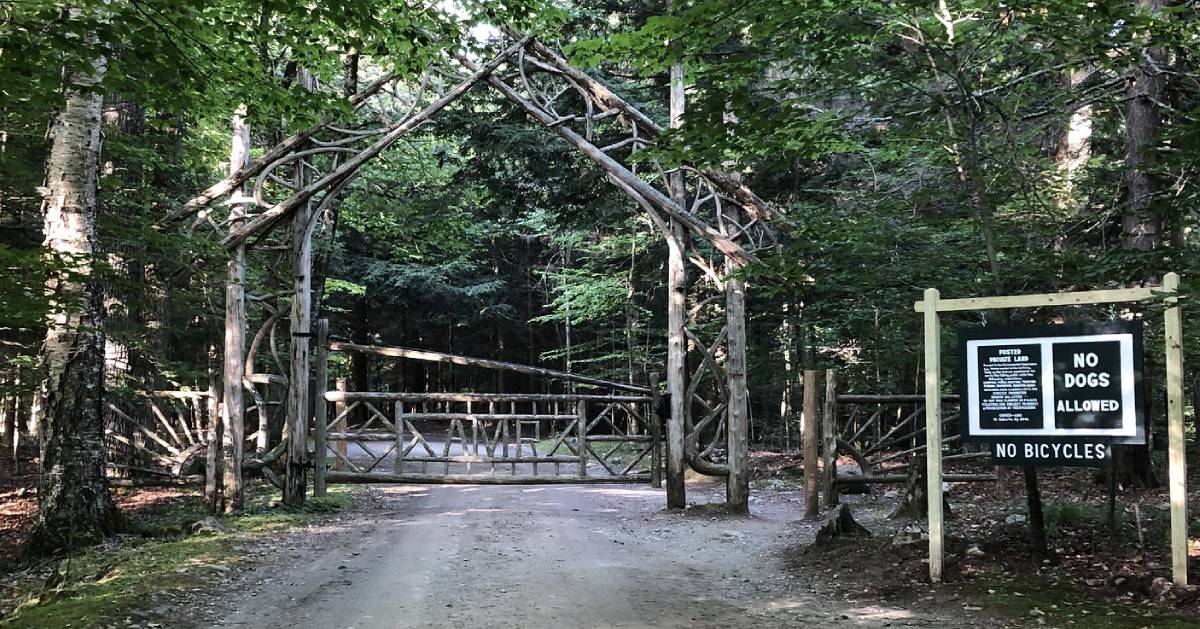The Adirondacks High Peaks: FAQ & General Information
Get your questions answered and find general information on hiking, camping, and recreating in our Adirondack High Peaks FAQ. You'll find everything you need to head out into the High Peaks Wilderness with confidence, knowing you researched and planned ahead.
Jump To:

General Info About the 46 High Peaks

The 46 High Peaks were originally grouped together based on their elevations. In 1927, Russell M. W. Carson's book "Peaks and People of the Adirondacks" described the mountain elevations. His research determined that the 46 High Peaks were the tallest mountains in the Adirondacks, and all of them had an elevation of at least 4,000 feet.
Later geological surveys revealed that not all of the 46 High Peaks were actually 4,000 feet or above in elevation, and one that did meet the "requirement" was excluded. Nevertheless, the original 46 are still grouped together and recognized as the ones to overcome. If you climb them all, you can become an official Adirondack 46er!

Also, although they are referred to as high peaks, all 46 aren't the highest points in New York State. The Catskills have 35 High Peaks that are above 3,500 feet in elevation. A few of the Catskills' High Peaks are greater in elevation than some of the 46 Adirondacks' High Peaks.
The 46 High Peaks are all located in the Adirondack Forest Preserve, meaning they are on state-owned lands open for recreation, such as hiking and backcountry camping.
You can find the mountains in and around the High Peaks Wilderness Area in the northeastern region of the Adirondack Park. The High Peaks Wilderness is split between Western and Eastern zones.
Some rules change based on the Zone you are in, so check our FAQ for more helpful information and to learn about some of the important differences.
Hiker Shuttle

The Route 73 hiker shuttle is typically available seasonally. Its primary route starts and ends at the Marcy Field parking area, with pickup/drop-off stops at Rooster Comb, Giant Mountain Ridge Trail, and Roaring Brook Falls.
Tickets for the shuttle can be purchased with cash only and are $10 round-trip per person. When the Garden parking lot at the trailhead is full, visitors can park in the Rooster Comb parking lot and use the shuttle to get to the trailhead.
The shuttle runs from 7 a.m. to 7 p.m. on weekends and holidays after July 6, 2024.
Frequently Asked Questions
Q: Do you have to pay to park/hike in the High Peaks Wilderness Area?
Only in the Adirondack Mountain Reserve, which is on private land.
Q: How do I know if I'm in the High Peaks Wilderness Area?
A: There will be brown and yellow signs to let you know when you've entered the NYS Department of Environmental Conservation's (DEC) public lands in the High Peaks Wilderness. The boundaries are available to check online. You'll also find trail register boxes near major access points, which you should sign in and out of.
Q: Can I camp in the High Peaks Wilderness Area?
A: Yes, however, the overnight group size is limited to a maximum of eight people.
Q: Where should I camp in the High Peaks Wilderness Area?
Backcountry camping is allowed on most Forest Preserve lands in the High Peaks Area. The exceptions are Unique Areas, Wildlife Management Areas, Historical Sites, and Nature Preserves. Also, camping is prohibited if you are within 150 feet of a road, trail, spring, stream, pond, or body of water.
Areas with a yellow DEC "Camp Here" tree marker are designated primitive campsites. Campers aren't required to stay at these designated sites, but the DEC marked them because they are generally on flat and hard land, which minimizes erosion.
Q: What if I want to go camping with a large group of people?
A: The maximum group size for overnight camping in the High Peaks Wilderness Area is eight people.
Q: Am I able to make a campfire at my campsite?
A: In the Eastern High Peaks Zone, no campfires are allowed. In the Western High Peaks Zone, campfires are only allowed at designated sites or areas that are at least 150 feet away from a road, trail, or water source.
Q: Can I bring my own firewood to a campsite or campground?
A: No. In order to prevent the spread of invasive species, the DEC requires that all campers must get their firewood from the campground or a local vendor.
Q: Do I need a bear-resistant canister?
In all parts of the High Peaks Wilderness, campers must use bear-resistant canisters between April 1st and November 30th. Store all your food, toiletries, garbage, bug repellent, etc., in them. The canisters are meant to prevent bears from smelling scented items.
Q: How large of a group can go hiking together?
A: Groups on a day trip in the High Peaks Wilderness Area are limited to a maximum of 15 people.
Q: What are the rules for guided tours?
Guided tours in the High Peaks Wilderness Area require a licensed guide. You don't need to be a resident of New York State to be a licensed guide, but a license can only be obtained by taking an exam run by the DEC's forest rangers. All licensed guides must be at least 18 years of age.
Q: Can affiliated groups participate in recreational activities together, including hiking and camping?
A: Groups must adhere to the group size limits for camping and hiking. Furthermore, affiliated groups must stay at least one mile away from each other.
See a list of the 46 Adirondack High Peaks >>
Additional Rules & Regulations

- Camping above an elevation of 4,000 feet is prohibited at all times and is only allowed at that elevation in an emergency.
- Camping above 3,500 feet is only permitted at designated sites.
- Emergency fires are allowed at elevations above 4,000 feet.
- Don't disturb wildlife and plants.
- Pets must be kept under control, and dogs must be leashed in the Eastern High Peaks.
- Don't use soap for washing or cleaning within 150 feet of water.
- Also, dispose of human waste at least 150 feet from a trail or source of water.
- Lean-tos are available on a first-come, first-served basis, but they must be shared with other campers.
- Follow the practice of "Leave No Trace."
A complete list of the DEC's State Land Camping and Hiking Rules are available online.
Make Sure Your Properly Prepared
Whether you are hiking the peaks in one day or camping overnight, it's essential that you have the proper gear.
Water-resistant items, ample hydration methods, emergency tents, and power banks are all items that could make your expedition through the peaks a fail-proof success.
Check out our list of hiking gear to pack for your next adventure to ensure you have everything you need! And make sure you're dressed properly with help from our list of recommended Adirondack hiking apparel.
Adirondack Mountain Reserve (AMR)

The Adirondack Mountain Reserve, or AMR, consists of private lands around the Upper & lower Ausable Lakes and the upper reaches of the East Branch Ausable River. This segment of land is situated between two sections of the High Peaks Wilderness in the Adirondack Park.
Special rules apply to the AMR. The public is prohibited from entering the clubhouse, camps, buildings, lands, and waters outside the designated marked roads and trails.
Reservations are required to park on the reserve and access some of the property's trails. Parking spots can be reserved at no cost for both single-day and overnight use. Visitors can make reservations up to two weeks in advance on a 24-hour rolling basis.
The property takes 70 reservations a day and there are often cancellations, so check back on the website frequently for availabilities. To access the Noonmark and Round Mountain trailheads on the AMR property, reservations are required.
Amazon Affiliate Disclosure: Our team independently recommends products on Amazon.com, and we earn from qualifying purchases.